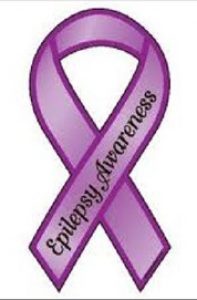I had my first real epileptic seizure when I was 5 years old. My mother says my eyes were rolling and I was staring off into the distance. She was terrified. What do I remember from then now is nothing but stories I hear.
What I had is called a “petit mal” seizure or an “absence” seizure. It’s called that because there’s a lapse in conscious activity for a couple of seconds. It’s different from a “grand mal” seizure, when people have convulsions. That’s what most people think of when they think of epilepsy. A petit mal seizure may not sound like much, but it’s still dangerous because you can drown or have some other kind of accident in those few seconds. But my epilepsy hasn’t really stopped me from doing things. I’m in high school at a public school. Most kids at my school don’t even know I have epilepsy — you know, I dress normally and act normally. I’m an honor student at my high school; I have a 3.48 grade point average. I’ve been playing soccer for five years, and I bowled on a team for three years. I’m a Girl Scout, and I volunteer for the Red Cross as well as for a drug abuse prevention program. After I graduate from high school, I want to go to college to become either a forensic investigator or a lawyer. There are days I want to hide in a bathroom stall let nobody see my siezures or anything because I want to be the “normal” average teenager. I then look around and remember nobody is normal cuss normal not a robot. Everyone is different and nobody is the same. Siezures are a part of me and I have nothing to hide everyone else has to accept all of me or don’t say you accept me if you can’t handle my siezures cuss that is apart of me. It’s like the saying goes “If you can’t take me at my worst then u can’t have me at my best”.
I don’t think epilepsy has to stop me from doing what I want with my life. I used to be afraid to tell people about my epilepsy, but after having a seizure at school in middle school, I realized that people needed to know, that I needed to share safety tips with them. They need the information just as much as I needed the information.
So if there are other kids out there who have epilepsy, here’s what I want them to know: “Don’t be worried about what others may say about you,” and “You’re not the only one who has epilepsy and epilepsy doesn’t have you”.
……………………
Please continue SHARING your stories and I will continue to support and write and share with others. Thank you so much for sharing. Please if anyone else wants to share there please do 🙂 thank you







